LONDON’S Covid cases rose sharply just as thousands of people fled to go home for Christmas.
The capital’s train stations were packed on Saturday 19 as Londonders scrambled to leave before the Tier 4 restrictions came into effect on Sunday morning.

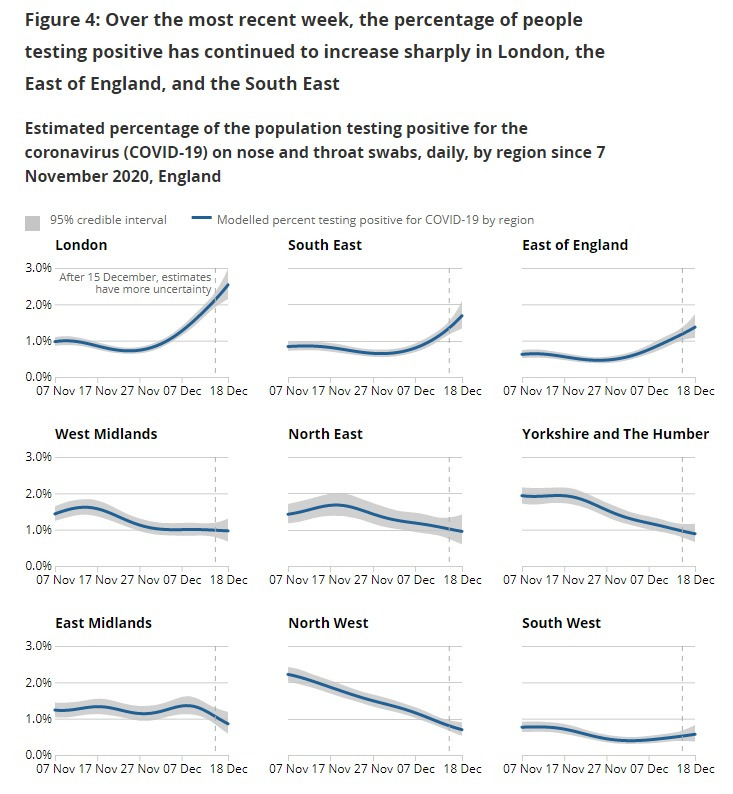
And figures now show there were more people in London who had Covid-19 that week than anywhere else in England.
The capital also has the highest number of people testing positive for the new British strain of the virus – almost 70 per cent of cases were caused by VUI 202012/01.
It raises fears the new variant of the virus will spill out into the rest of the UK, having been focused in the South East until this point.
Health chiefs begged people living in London to avoid leaving the area in the hours before the Tier 4 restrictions came in – which ban travel, overnight stays and Christmas bubbles.
But in desperation to see family, crowds of city dwellers ignored the Chief Medical Officer Chris Whitty’s pleas to “unpack your bags”.
On top of this, a new strain from South Africa has now been detected in the UK.
Two cases – one in London and one in the North West – have been confirmed.
Sharp rise in cases
The figures today come from the Offfice for National Statistics coroanvirus infection survey, which swabs thousands of people in their homes every week.
The agency says that in the week to December 18, an estimated 645,800 people had Covid-19 – the equivalent of around 1.18 per cent of the population, or one in 85 people.
It’s a rise from 567,300 people, or one in 95, who were estimated to have Covid-19 the week before (December 6 to 12).
And it’s higher than the end of October, when scientists urged the PM to announce a second national lockdown.
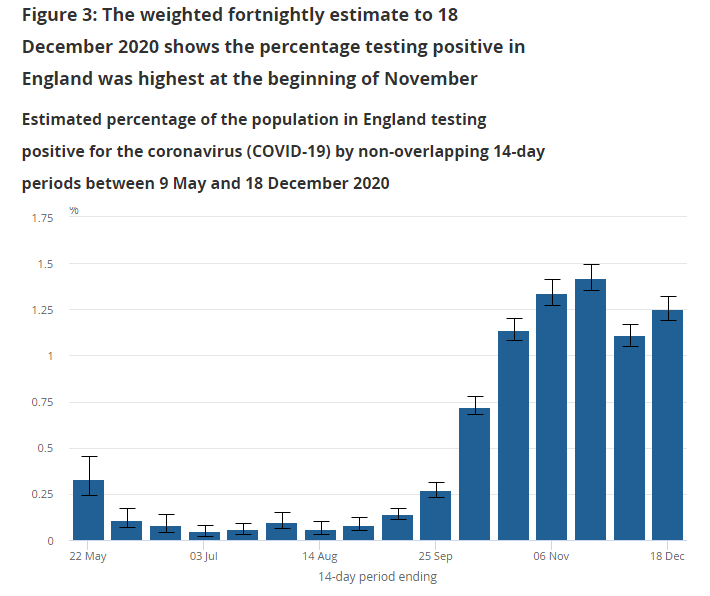
The figures do not include people staying in hospitals, care homes or other institutional settings.
Sharp increases in the percentage of people testing positive for Covid-19 have been recorded in London, eastern England and south-east England.
Most of these parts are now in Tier 4 or will be by Boxing Day.
London has the highest rate of people testing positive in their homes – an estimated 2.1 per cent.
This is followed by south-east England (1.4 per cent) and eastern England (1.2 per cent).
The percentage testing positive in south-west England has also increased during the most recent week, while rates have continued to decrease in north-west England and Yorkshire & the Humber.
Cases of the new UK variant are highest in London, the ONS said, accounting for almost 70 per cent of all Covid infections.
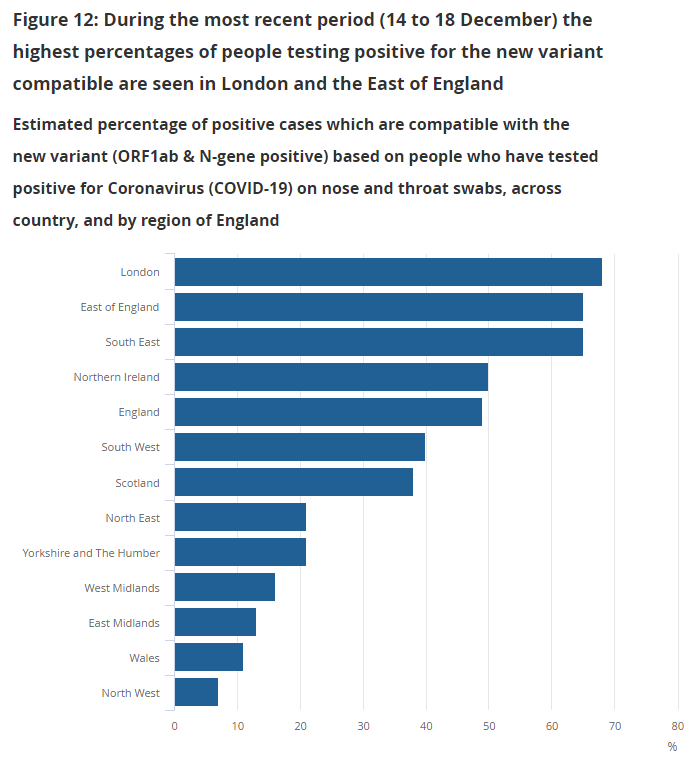
In Wales, the percentage of people testing positive for Covid-19 has increased sharply in recent weeks, the ONS said.
Around one in 60 people had Covid-19 in the week to December 18, as 52,200 people in private homes tested positive.
This is a sudden rise from the 33,400 people for the period December 6 to 12, or one in 90 people.
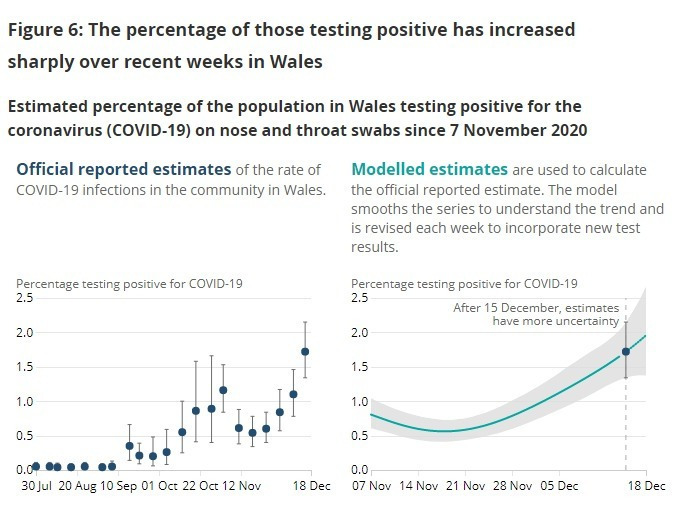
Covid cases are highest among secondary school aged children, the ONS said, amid concerns the new mutant strain is better able to infect youngsters than before.
Scientists are investigating whether “explosions” of cases in schools – as well as care homes – are being caused by the new strain.
There is a “hint” that this strain can more easily bind to cells in children’s bodies.
Rising R rate
It comes after experts warned the R rate in London could be as high as 1.4. This means that if 10 people had the coronavirus, they would pass it onto 14 more.
It compares to 1.2 in the UK overall.
The estimates are from King’s College London (KCL), who run the ZOE Covid Symptom Study app, in which people across the UK input their symptoms and test results into an app.
The experts state that there are large differences when it comes to infection rates across the 32 different London boroughs.
It states that Havering and Enfield are the worst effected areas, followed by Newham and Kingston upon Thames.
Hounslow and Richmond upon Thames are the least affected areas in the capital.
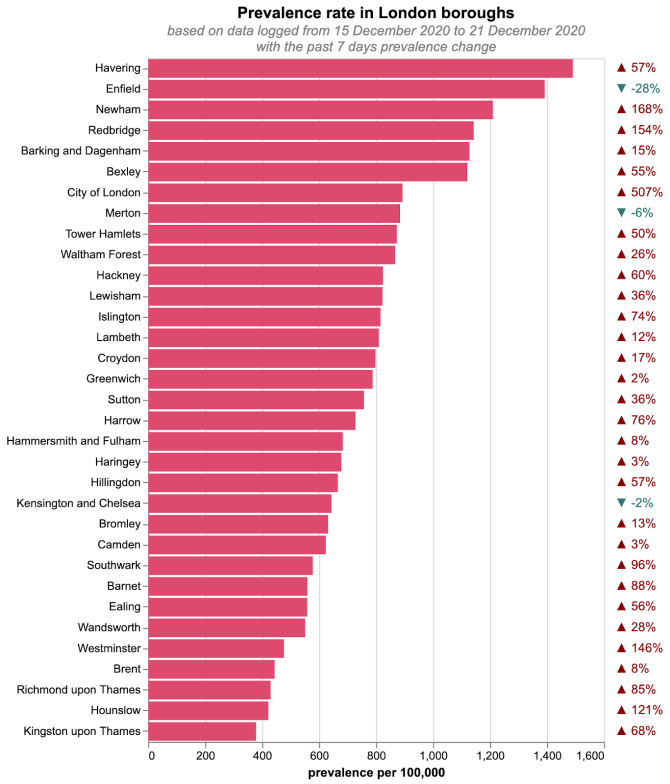
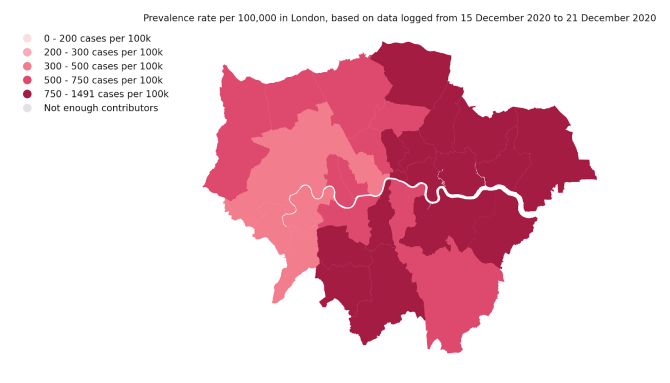
Official government statistics show Havering has the second highest infection rate in England – 1,227 in the week to December 19, up from 656 the week before.
Redbridge has an infection rate of 1,098, Barking and Dagenham 1,016 and Waltham Forest 904.
London’s rate of new cases has more than doubled in a week from 300.8 to 619.7.
The KCL app also shows cases of the coronavirus in the UK have soared by 44 per cent in a week.
There are currently 38,719 daily new symptomatic cases of Covid-19 in the UK on average over the two weeks up to 18 December.
This is a 43.9 per cent increase on 26,897 cases four days ago.
The estimate is slightly different to the ONS, who give a prediction for both symptomatic and asymptomatic cases.
Yesterday the Health Secretary Matt Hancock told the Downing Street briefing that confirmed Covid cases in the UK had increased by 57 per cent in one week.
He said around 1,900 people were being admitted to hospital with Covid per day, with 18,943 currently in hospital with the disease – almost as many as the peak in April.
Did you miss our previous article...
https://trendinginthenews.com/covid-19/who-is-rebecca-lukers-husband-danny-burstein






